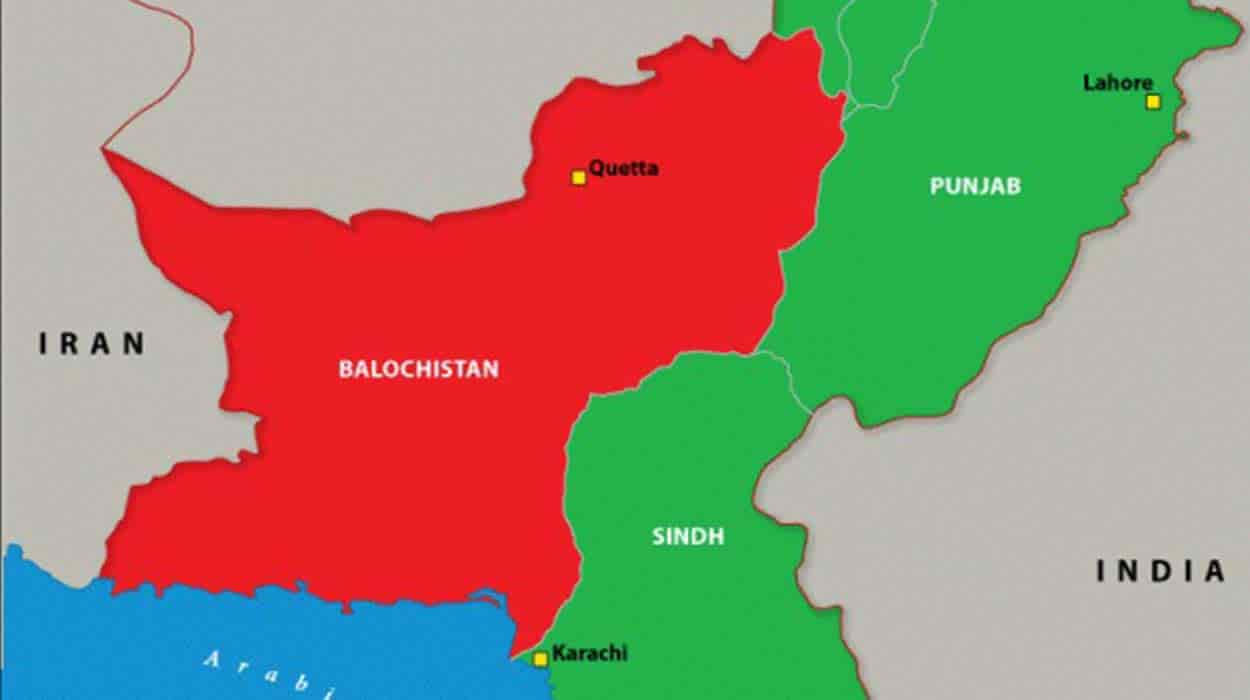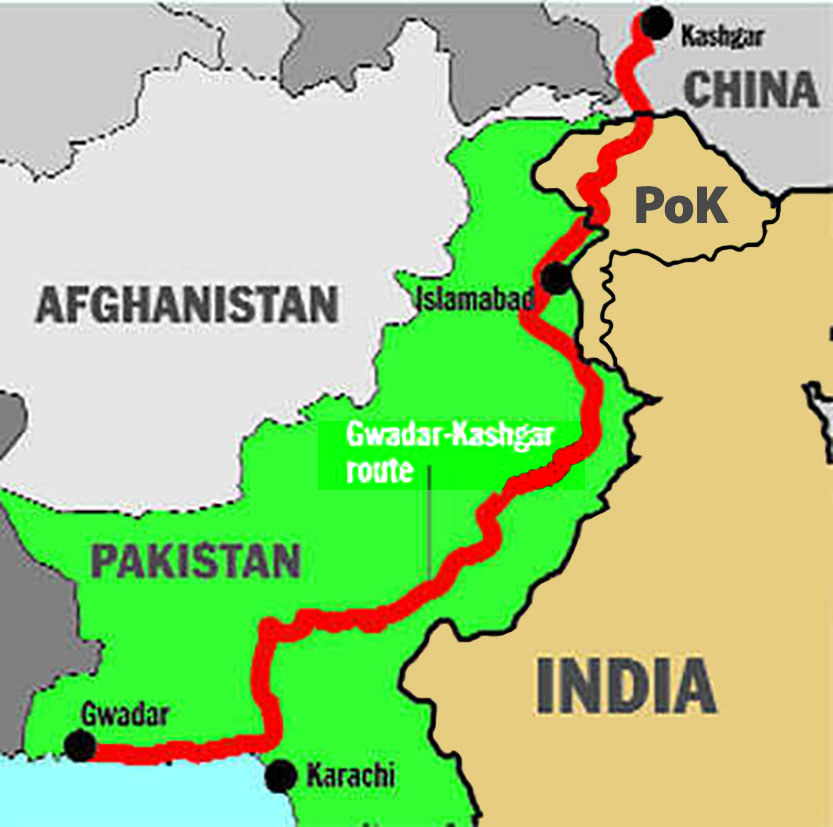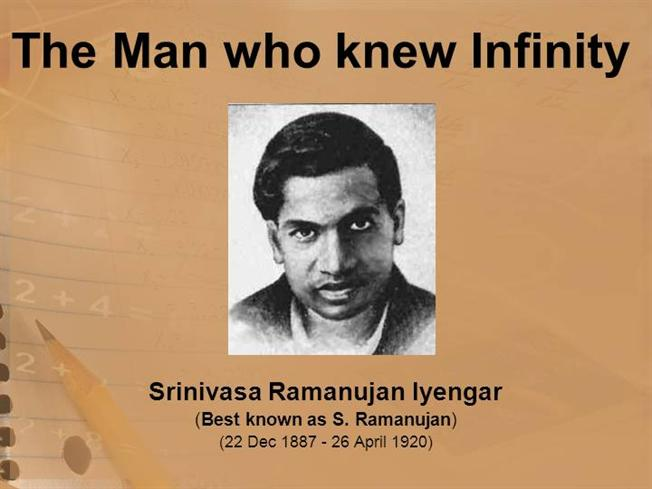Observer Status to International Solar Alliance: UN
Why in News
Recently, the United Nations General Assembly(UNGA) has granted Observer Status to the International Solar Alliance (ISA).
- It will help provide for regular and well-defined cooperation between the Alliance and the United Nations that would benefit global energy growth and development.
- Earlier, the fourth general assembly of the ISA was held, where a total of 108 countries participated in the assembly, including 74 member countries, 34 observer and prospective countries, 23 partner organisations and 33 special invitee organisations.
United Nation General Assembly
- About:
- UNGA is the main deliberative, policymaking and representative organ of the UN.
- All 193 Member States of the UN are represented in the General Assembly, making it the only UN body with universal representation.
- The President of the General Assembly is elected each year by assembly to serve a one-year term of office.
- Meetings:
- Each year, in September, the full UN membership meets in the General Assembly Hall in New York for the annual General Assembly session, and general debate, which many heads of state attend and address.
- Decisions on important questions, such as those on peace and security, admission of new members and budgetary matters, require a two-thirds majority of the General Assembly.
- Decisions on other questions are by simple majority.
- Each year, in September, the full UN membership meets in the General Assembly Hall in New York for the annual General Assembly session, and general debate, which many heads of state attend and address.
Key Points
- About ISA:
- The ISA is an intergovernmental treaty-based organisation with a global mandate to catalyse solar growth by helping to reduce the cost of financing and technology.
- ISA is the nodal agency for implementing One Sun One World One Grid (OSOWOG), which seeks to transfer solar power generated in one region to feed the electricity demands of others.
- Launch:
- It is an Indian initiative that was launched by the Prime Minister of India and the President of France on 30th November 2015 in Paris, France on the side-lines of the UNFCCC Conference of the Parties (COP-21), with 121 solar resource rich countries lying fully or partially between the tropic of Cancer and tropic of Capricorn as prospective members.
- Members:
- 101 members, after being joined by the US.
- Headquarters:
- The Headquarters is in India with its Interim Secretariat being set up in Gurugram.
- Objectives:
- To collectively address key common challenges to the scaling up of solar energy in ISA member countries.
- New ISA Programmes:
- New ISA programmes have been launched on management of solar PV panels & battery usage waste and solar hydrogen programme.
- The new Hydrogen initiative is aimed at enabling the use of solar electricity to produce hydrogen at a more affordable rate than what is available currently (USD 5 per KG), by bringing it down to USD 2 per KG.
- New ISA programmes have been launched on management of solar PV panels & battery usage waste and solar hydrogen programme.
- Some Solar Energy Initiatives of India:
- National Solar Mission (a part of National Action Plan on Climate Change): To establish India as a global leader in solar energy, by creating the policy conditions for its diffusion across the country as quickly as possible.
- INDC’s target: It targets installing 100 GW grid-connected solar power plants by the year 2022.
- This is in line with India’s Intended Nationally Determined Contributions (INDCs) target to achieve about 40% cumulative electric power installed capacity from non-fossil fuel based energy resources and to reduce the emission intensity of its GDP by 33 to 35% from 2005 level by 2030.
- International Solar Alliance (ISA) and One Sun One World One Grid (OSOWOG):
- Government Schemes: Such as Solar Park Scheme, Canal bank & Canal top Scheme, Bundling Scheme, Grid Connected Solar Rooftop Scheme etc.
- First Green Hydrogen Mobility project: National Thermal Power Corporation Limited (NTPC) Renewable Energy Ltd (REL) signed a Memorandum of Understanding with the Union Territory of Ladakh to set up the country’s first Green Hydrogen Mobility project.
- Green hydrogen is produced by electrolysis of water using renewable energy (like Solar, Wind) and has a lower carbon footprint.
Solar Energy
- About:
- It is radiation from the Sun capable of producing heat, causing chemical reactions, or generating electricity.
- The total amount of solar energy incident on Earth is vastly in excess of the world’s current and anticipated energy requirements. If suitably harnessed, this highly diffused source has the potential to satisfy all future energy needs.
- Significance:
- Solar Energy is available throughout the day which is the peak load demand time.
- Solar energy conversion equipment have longer life and need lesser maintenance and hence provide higher energy infrastructure security.
- Low running costs & grid tie-up capital returns (Net Metering).
- Unlike conventional thermal power generation from coal, they do not cause pollution and generate clean power.
- Abundance of free solar energy in almost all parts of the country.
- No overhead wires- no transmission loss.
Protests in Balochistan
Why in News
Over the last few weeks,there have been continuous protests in Gwadar, Balochistan against mega development plans of the port city as part of the China-Pakistan Economic Corridor.
- The protesters have sought to draw attention to marginalisation of the local people in the development of the port.
- Pakistan claims that India has been supporting these protests.
Key Points
- About Balochistan:
- Balochistan is one of the four provinces of Pakistan.
- It is least populated even though it is the largest province in terms of land size.
- It is populated in ethnic Baloch people which can be found in modern day Iran and Afghanistan though the majority of Baloch can be found in Balochistan.
- Balochistan is rich in natural gas and oil and is one of the most important regions of Pakistan.
- Uprising in Balochistan:
- During the withdrawal of the British from the Indian subcontinent, the Kingdom of Balochistan was offered the same offer, either to join India, join Pakistan or remain independent.
- The king of Balochistan chose to remain independent and it did remain independent for nearly a year.
- In the year 1948, the Pakistan government, with a combination of military and diplomacy, took control of the region and made it into a part of Pakistan.
- Due to lack of development and human rights violations in the region done by the Pakistan military and terror groups, the insurgency in Balochistan has been active since 1948.
- Pakistan claims that India has been supporting these rebel fighters with arms and intelligence.
- India’s Stand on Balochistan:
- India has long maintained a political stance of not interfering in the internal matters of Pakistan or any other country.
- Despite Pakistan repeatedly bringing up the Kashmir issue over the years, India had maintained silence on Balochistan.
- However, in 2016, remarks on Balochistan came in the immediate aftermath of the Independence Day celebration in Pakistan that was dedicated to the independence of Kashmir.
- India’s response was quick with India’s Prime Minister referring to atrocities of Baloch people in his Independence speech in 2016.
CPEC & India’s Concerns
- About CPEC:
- The CPEC is a bilateral project between Pakistan and China.
- It aims to link the Western part of China (Xinjiang province) to the Gwadar Port in Balochistan, Pakistan via Khunjerab Pass in the Northern Parts of Pakistan.
- It is intended to promote connectivity across Pakistan with a network of highways, railways, and pipelines accompanied by energy, industrial, and other infrastructure development projects.
- It will pave the way for China to access the Middle East and Africa from Gwadar Port, enabling China to access the Indian Ocean.
- CPEC is a part of the Belt and Road Initiative.
- India’s Concerns:
- Sovereignty Issue: Some of the proposed infrastructure that the Chinese have been developing for Pakistan are passing through the disputed region of Pakistan Occupied Kashmir (POK).
- India considers it to be a part of its own territory.
- Dual Purpose of Gwadar Port: India has been concerned about Gwadar, which gives China strategic access to the Arabian Sea and the Indian Ocean.
- It is not just being developed as a trade entrepot but as a dual purpose port for use by the Chinese Navy.
- It is part of String of pearls theory, under which China is building state of the art gigantic modern ports all along the Indian Ocean and to the south of it, in Gwadar (Pakistan), Chittagong (Bangladesh, Kyauk Phru (Myanmar) and Hambantota (Sri Lanka).
- The string of pearls is a strategic threat to India, as it aims to encircle India to establish Chinese dominance in the Indian Ocean.
- Sovereignty Issue: Some of the proposed infrastructure that the Chinese have been developing for Pakistan are passing through the disputed region of Pakistan Occupied Kashmir (POK).
RATS-SCO
Why in News
Recently, India assumed the Chairmanship of Council of Regional Anti-Terrorist Structure of Shanghai Cooperation Organization (RATS-SCO) in 2021 for a period of one year.
- In pursuance of this, the National Security Council Secretariat (NSCS) in association with Data Security Council of India (DSCI), organized a Seminar on Securing Cyberspace in the Contemporary Threat Environment.
Key Points
- About RATS-SCO:
- SCO-RATS is a permanent body of the SCO and is intended to facilitate coordination and interaction between the SCO member states in the fight against terrorism, extremism and separatism.
- The main functions of SCO-RATS are coordination and information sharing.
- As a member, India has actively participated in the activities of SCO-RATS.
- India’s permanent membership would enable it to generate greater understanding among members for its perspective.
- About Shanghai Cooperation Organization(SCO):
- The Shanghai Cooperation Organization (SCO) was established as a multilateral association to ensure security and maintain stability across the vast Eurasian region.
- It envisages joining forces to counteract emerging challenges and threats, and enhance trade, as well as cultural and humanitarian cooperation. It was created in 2001.
- Prior to the creation of SCO in 2001, Kazakhstan, China, Kyrgyzstan, Russia and Tajikistan were members of the Shanghai Five.
- Shanghai Five (1996) emerged from a series of border demarcation and demilitarization talks which the four former Soviet republics held with China to ensure stability along the borders.
- Following the accession of Uzbekistan to the organisation in 2001, the Shanghai Five was renamed the SCO.
- The SCO Charter was signed in 2002, and entered into force in 2003. The SCO's official languages are Russian and Chinese.
- SCO has two Permanent Bodies:
- SCO Secretariat in Beijing,
- Executive Committee of the Regional Anti-Terrorist Structure (RATS) in Tashkent.
- The Chairmanship of SCO is by rotation for a year by Member States.
- India and Pakistan became members in 2017.
- Member countries: Kazakhstan, China, Kyrgyzstan, Russia, Tajikistan, Uzbekistan, India, Pakistan.
- Recently, Iran’s bid to become a full member of the SCO has been approved.
India & SCO
- Advantages for India:
- Regional Security: SCO will enable India, as an integral part of the Eurasian security grouping, to neutralise centrifugal forces arising from religious extremism and terrorism in the region.
- Embracing Regionalism: The SCO is one of the few regional structures India is a part of now, given a decline in its engagement with SAARC, Bangladesh, Bhutan, India, Nepal (BBIN) Initiative.
- More importantly, cooperation in three critical areas— energy, building trade and transportation links, and dealing with traditional and non-traditional security threats.
- Connect With Central Asia: The SCO provides India with a convenient channel for its outreach — trade and strategic ties — to Central Asian countries.
- SCO is also a potential platform to advance India’s Connect Central Asia policy.
- The foundation of India’s economic outreach to Central Asia is based on its 2012 Connect Central Asia Policy with its focus on the 4 C’s - Commerce, Connectivity, Consular and Community.
- Foundational Dimensions of SECURE: Acknowledging the strategic importance emanating from the region and SCO, the Indian Prime Minister had articulated the foundational dimension of Eurasia being 'SECURE’. The letters in the word SECURE are:
- S for Security of our citizens,
- E for Economic development for all,
- C for Connecting the region,
- U for Unite our people,
- R for Respect for Sovereignty and Integrity, and
- E for Environment protection.
- Dealing With Pakistan & China: SCO provides India with a forum where it can constructively engage both China and Pakistan in a regional context and project India’s security interests.
- Challenges That India Needs to Navigate:
- Absence of Direct Land Connectivity: A major impediment in India’s expanded engagement with Eurasia remains the strategic denial of direct land connectivity between India and Afghanistan and beyond by Pakistan.
- The lack of connectivity has also hampered the development of energy ties between the hydrocarbon-rich region and India
- Growing Russia-China Convergence: One of the major factors for Russia pushing India’s inclusion into the SCO was to balance China’s power.
- Difference Over BRI: While India has made its opposition to Belt and Road Initiative(BRI) clear, all other SCO members have embraced the Chinese project.
- India-Pakistan Rivalry: SCO members have, in the past, expressed fears of the organisation being held hostage to India’s and Pakistan’s adversarial relationship, and their fears would likely have worsened in recent times.
- Absence of Direct Land Connectivity: A major impediment in India’s expanded engagement with Eurasia remains the strategic denial of direct land connectivity between India and Afghanistan and beyond by Pakistan.
Way Forward
- Improving Connectivity With Central Asia: The opening of Chabahar port and India’s entry into the Ashgabat agreement should be utilized for a stronger presence in Eurasia.
- Besides this, a clear focus on operationalising International North-South Transport Corridor (INSTC).
- Improving Relations With China: It is imperative that India and China set up a modus vivendi (agreement allowing conflicting parties to coexist peacefully) for the 21st century to be viewed through the lens of an Asia century.
- Strengthening Military Corporation: In the context of increasing terrorism in the region, it is imperative for SCO countries to develop a ‘cooperative and sustainable security’ framework and make the Regional Anti-Terrorist Structure more effective.
NIPER Amendment Bill, 2021
Why in News
Recently, Rajya Sabha passed the National Institute of Pharmaceutical Education and Research(NIPER) Amendment Bill, 2021.
- It seeks to amend the National Institute of Pharmaceutical Education and Research Act, 1998 which established the National Institute of Pharmaceutical Education and Research at Mohali in Punjab and declared it an institution of national importance.
Key Points
- About the Bill:
- Status of Institute of National Importance:
- It seeks to accord the status of ‘institute of national importance’ to six more institutes of pharmaceutical education and research institutes – NIPERs – situated in Ahmedabad, Hajipur, Hyderabad, Kolkata, Guwahati and Raebareli.
- Establishment of Advisory council:
- The council will be a central body, to coordinate the activities of all the institutes to ensure coordinated development of pharmaceutical education and research and maintenance of standards.
- The functions of the council include:
- Advising on matters related to course duration, formulating policies for recruitment, examining and approving development plans of the institutes, examining annual budget estimates of the institutes for recommendations to the central government for allocation of funds.
- Rationalizes the Board of Governors:
- The Bill rationalises the Board of Governors of each NIPER from its existing strength of 23 to 12 members and widens the scope and number of courses run by the institutes.
- Status of Institute of National Importance:
- Significance:
- The NIPERs would be governed on the lines of the IITs.
- NIPERs will help in research that could bring more patents for India, which in turn, would mean the nation can produce high-cost pharmaceuticals.
- Issues with the Bill:
- State governments along with Scheduled Castes and the Scheduled Tribes (Prevention of Atrocities Act), 1989 (SC/ST Act), OBC and women have not been included in the apex council of the NIPERs.
- Issues like autonomy and over-centralisation of power have also been raised.
- It has been said that the proposed council has been empowered with excessive powers with regard to financial, administrative and managerial matters of these institutes, which has to be looked into very carefully.
- The Bill potentially compromises the institutes’ autonomy as the council will mostly be composed of central government bureaucrats and some MPs, wherein it may take decisions that may not be in a particular institute’s best interest.
National Institutes of Pharmaceutical Education and Research (NIPERs)
- They are the institutes of national importance under the aegis of the Department of Pharmaceutical, Ministry of Chemicals and Fertilizers.
- Any Institution of National Importance is an autonomous body/institute with the power to hold examinations and grant educational certificates/degrees.
- They get funding from the central government.
- Any Institution of National Importance is an autonomous body/institute with the power to hold examinations and grant educational certificates/degrees.
- The Institute is conceived to provide leadership in pharmaceutical sciences and related areas not only within the country, but also to the countries in SouthEast Asia, South Asia and Africa.
- NIPER, Mohali is a member of Association of Indian Universities and Association of Commonwealth Universities.
- Association of Indian Universities (AIU), formed in 1925 as Inter-University Board (IUB), is an association of all universities in India. It is actively engaged in the growth and development of higher education.
- The Association of Commonwealth Universities is an international organisation dedicated to building a better world through higher education in over 50 countries across the Commonwealth.
Gaganyaan Mission
Why in News
Recently, the Union Minister of Atomic Energy and Space informed that the crewed Gaganyaan mission will finally be launched in 2023.
- The country's first space station is likely to come up by 2030.
Key Points
- About:
- Gaganyaan is a mission by the Indian Space Research Organisation (ISRO).
- Under the Gaganyaan schedule:
- Three flights will be sent into orbit.
- There will be two unmanned flights and one human spaceflight.
- The Gaganyaan system module, called the Orbital Module will have three Indian astronauts, including a woman.
- It will circle Earth at a low-earth-orbit at an altitude of 300-400 km from earth for 5-7 days.
- With that launch, India will be in the elite club of nations (America, China and Russia).
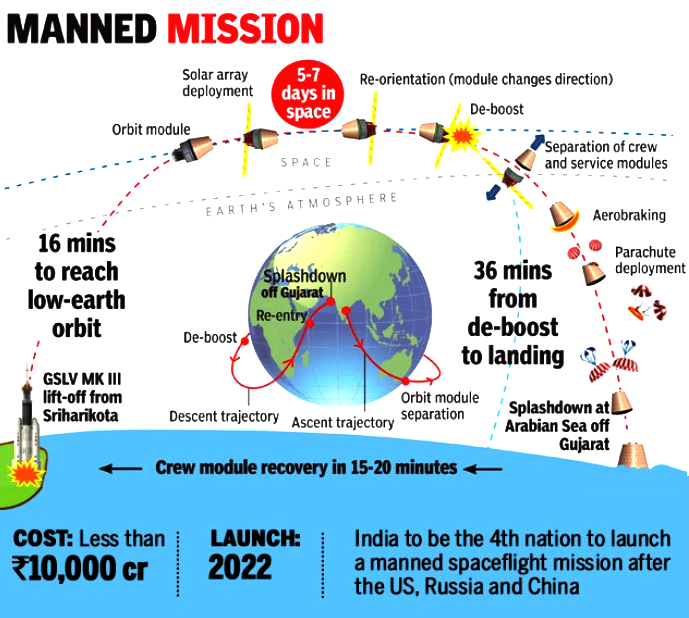
- Payloads:
- The payload will consist of:
- Crew module - spacecraft carrying human beings.
- Service module - powered by two liquid propellant engines.
- It will be equipped with emergency escape and emergency mission abort.
- The payload will consist of:
- Launch:
- GSLV Mk III, also called the LVM-3 (Launch Vehicle Mark-3,) the three-stage heavy lift launch vehicle, will be used to launch Gaganyaan as it has the necessary payload capability.
- Gaganyaan’s major missions like the test vehicle flight for the validation of crew escape system performance and first uncrewed mission of Gaganyaan (G1) are scheduled during the beginning of the second half of next year (2022).
- This will be followed by the second uncrewed mission at the end of 2022 carrying ‘Vyommitra’, a spacefaring human robot developed by Isro, and finally the first crewed Gaganyaan mission in 2023.
- GSLV Mk III, also called the LVM-3 (Launch Vehicle Mark-3,) the three-stage heavy lift launch vehicle, will be used to launch Gaganyaan as it has the necessary payload capability.
- Significance:
- It will help in enhancement of science and technology levels in the country and help inspire youth.
- Gaganyaan will involve numerous agencies, laboratories, disciplines, industries and departments.
- It will help in the improvement of industrial growth.
- A new organisation, IN-SPACe, part of reforms to increase private participation in the space sector was announced last year (2021).
- It will help in the development of technology for social benefits.
- It will help in improving international collaboration.
- One International Space Station (ISS) put up by multiple countries may not be enough. Regional ecosystems will be needed and Gaganyaan will focus on regional needs: food, water and energy security.
- It will help in enhancement of science and technology levels in the country and help inspire youth.
- Other Upcoming Mission:
- Shukrayaan Venus Mission (For 2023):
- The Shukrayaan orbiter will be the first mission to Venus by the ISRO and will study the planet for four years
- L-1 Aditya Solar (For 2022-23):
- Chandrayaan-3 Missions (For 2022-23):
- The Chandrayaan-3, a follow-up of the Chandrayaan-2 mission, involves “various processes, including finalisation of configuration, subsystems realisation, integration, spacecraft level detailed testing and a number of special tests to evaluate the system performance on earth.
- Shukrayaan Venus Mission (For 2023):
Ramanujan Prize
Why in News
The Ramanujan Prize for Young Mathematicians from developing countries has been given to Professor Neena Gupta.
- She is a mathematician at the Indian Statistical Institute in Kolkata and has been awarded for her outstanding work in affine algebraic geometry and commutative algebra.
- She is the third woman to receive the Ramanujan Prize.
- Her solution for solving the Zariski cancellation problem, a fundamental problem in Algebraic Geometry, earned her the 2014 Young Scientists Award of the Indian National Science Academy.
Key Points
- About:
- The Ramanujan Prize for Young Mathematicians from developing countries has been awarded annually since 2005.
- It is administered by the Abdus Salam International Centre for Theoretical Physics (ICTP) jointly with the Department of Science and Technology (DST) Government of India and the International Mathematical Union (IMU).
- ICTP: Founded in 1964 by the late Nobel Laureate Abdus Salam, it seeks to accomplish its mandate by providing scientists from developing countries with the continuing education and skills that they need to enjoy long and productive careers.
- IMU: It is an international non-governmental and non-profit scientific organization, with the purpose of promoting international cooperation in mathematics.
- It is a member of the International Science Council (ISC).
- DST: The DST has agreed to fund the Prize, starting with the 2014 Prize.
- It has been supported by DST in the memory of Srinivasa Ramanujan, a genius in pure mathematics who was essentially self-taught and made spectacular contributions to elliptic functions, continued fractions, infinite series, and analytical theory of numbers.
- Eligibility & Prize:
- It is awarded to a researcher from a developing country who is less than 45 years of age on 31st December of the year of the award, and who has conducted outstanding research in a developing country.
- Researchers working in any branch of the mathematical sciences are eligible.
- The Prize carries a USD 15,000 cash award.
- Ramanujan was born on 22nd December 1887 in a village Erode (400 km from Chennai, then known as Madras).
- The famous British mathematician Godfrey Harold Hardy recognised his talent in 1913. He went to Cambridge, on Godfrey Harold Hardy’s invitation.
- Ramanujam made substantial contributions to the analytical theory of numbers and worked on elliptic functions.
- He also worked on the partition of the whole number, hypergeometric series and Euler's constant.
- His papers were published in English and European journals, and in 1918 he was elected to the Royal Society of London.
- He died on April 26th, 1920, at the age of 32, just after returning to India after a long illness.
- In India, December 22nd is celebrated as National Mathematics Day in the memory of Srinivasa Ramanujan.
SAMPANN Project
Why in News
Over one lakh people have received pensions directly in their bank accounts through the SAMPANN (System for Accounting and Management of Pension) project.
Key Points
- About:
- It was launched in 2018. It is a seamless online pension processing and payment system for Department of Telecommunications pensioners.
- It provides direct credit of pension into the bank accounts of pensioners.
- It is an ambitious project being implemented by the Ministry of Communications.
- It has helped the Department in faster settlement of pension cases, improved reconciliation/auditing and ease of accounting.
- It has also been instrumental in settling close to 76000 BSNL Voluntary Retirement Scheme 2019 cases in a short span of 6 months.
- It is a system with a flexible design which enables it to accommodate ever expanding requirements.
- Benefits:
- It provides e-Pension payment orders which make the payment process easier and hassle-free.
- Timely settlement of pension cases.
- Every pensioner gets access to key information like payment history along with a login option.
- Login for each pensioner enables access to key information like payment history.
- Online submission of grievances and timely SMS alerts.
Earth’s Black Box
Why in News
Australian scientists and artists are going to make black box of the planet to hold the world accountable for their actions by creating a black box of the planet. 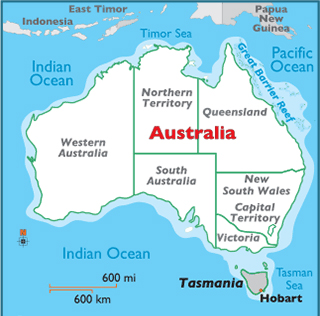
Key Points
- About:
- The box will be constructed in Tasmania, an Australian island state off the south coast.
- It will be made with 3-inch thick steel and covered with solar panels.
- It will operate much like a plane’s flight recorder, which records an aircraft’s final moments before crashing.
- The storage drives inside Earth’s Black Box are designed to last for around 30 to 50 years.
- The black box will be around the size of a city-bus, and inside there will be storage drives that record climate change conversations and also atmospheric carbon dioxide levels and average temperatures.
- Types of Data Collection by the Box:
- Two different types of data will be collected and stored inside the monolith.
- It will collect climate-change-related data like land and sea temperature measurements, species extinction, energy consumption, human population, ocean acidification, and atmospheric CO2 levels.
- It will collect contextual data, like newspaper headlines and trending stories, key news stories and social media posts.
- Two different types of data will be collected and stored inside the monolith.
- Reason for choosing the Tasmania:
- Tasmania was chosen for its relative geopolitical and environmental safety, and the monolith will be designed to be resilient against threats including cyclones, earthquakes and, with its sloped walls, attacks by vandals.
- Significance:
- Black box will actually help in preventing a major climate change catastrophe.
- Climate change is one of the gravest threats humanity faces and is exacerbating economic and health inequalities, increasing the frequency and intensity of natural disasters and threatening the world’s food supply.
- Black box will actually help in preventing a major climate change catastrophe.

